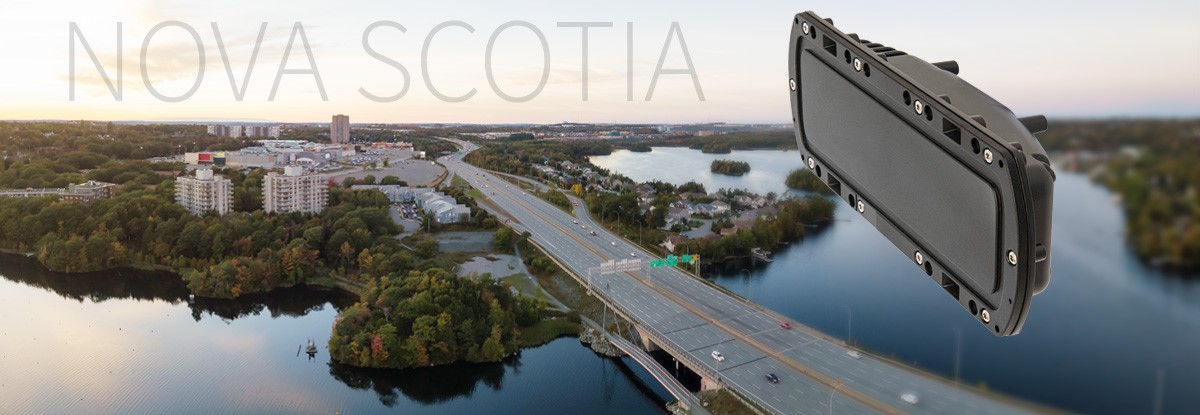When the Ministry of Transportation (Highways Division) in the Canadian province of Nova Scotia was seeking an effective solution to its outdated vehicle monitoring and traffic flow system, it was the team here at AGD that had the perfect offering.
Having previously relied upon standard inductive loops, The Highways Division was looking for a non-intrusive alternative in order to provide high quality data on vehicular volume, classification, and speed across all lanes of a busy highway.
Having had a partnership with us lasting more than two generations, AGD’s Canadian distributor, North Line Canada Ltd, recommended to its client an initial trial of our 343 Highways Monitoring Radar.
The project’s location was Kelly Lake Compliance Station situated on the Veteran’s Memorial Highway route 102, a site that utilised Weigh In Motion Sensors (WIMS) along with high-maintenance inductive loops.
One of the core challenges posed by the Canadian Highways Division was that the highway (which spanned almost 90 metres) comprised of multiple lanes in both directions, divided by a large, grassed median. Being able to set the radar to accommodate an elevation difference of over one metre between the north and southbound lanes was also vital.
Dean Jarvis, AGD’s Commercial Engineer, explains: “Our 343 radar was designed specifically to combat the challenges faced by authorities who require their monitoring products to be situated close to the highway itself. Most radars must be mounted between 5m and 8m from the carriageway, and – particularly on roads where the edge of the highway is close to the built environment – there isn’t always that amount of space available.
“The 343 can be mounted as close as two metres from the inner edge of the inside lane and, due to a bespoke antenna, will still provide information for the lane immediately below the radar, as well as the lane on the farthest point of the carriageway. The 343 is angled at 30o, but it can also monitor up to ten lanes of traffic, looking across both carriageways to detect vehicles travelling in approaching and receding directions – making it the perfect solution for this particular project.”
Following official approval for the trial to proceed at the designated site, the North Line team got to work and completed the installation at the location in less than 45minutes, with all traffic monitoring fully functional within a quarter of an hour of final commissioning.
Jim Sheehan of North Line Canada, commented at the start of the trial: “When we were approached by the Province of Nova Scotia and asked for assistance, the AGD343 product was an obvious choice as a solution to their very specific needs.
“AGD’s reputation for reliable equipment, intensive quality control, and their highly efficient responses to customer feedback meant that we were extremely confident that the initial installation would be a success – and we’d like to offer a huge thank you to the expert and experienced team on the ground at AGD who ensured a smooth and pain-free transition.”
The trial was a success, and the Highways Division in the Province of Nova Scotia were very happy with the performance of the radar at the test site, with the data provided being consistent with the data received via their IRD WIMS site. Subsequently we’ll be sending more units out in the coming months.
North Line Canada continue to recommend the AGD343, and we’re also set to deliver 343s to other customers of theirs – including highways authorities in British Columbia eagerly awaiting feedback from Nova Scotia with a view to updating their older loop sites.
At AGD, we are delighted with the continued success of the AGD343 product in providing the ideal solution to the unique challenges faced in Nova Scotia.




























